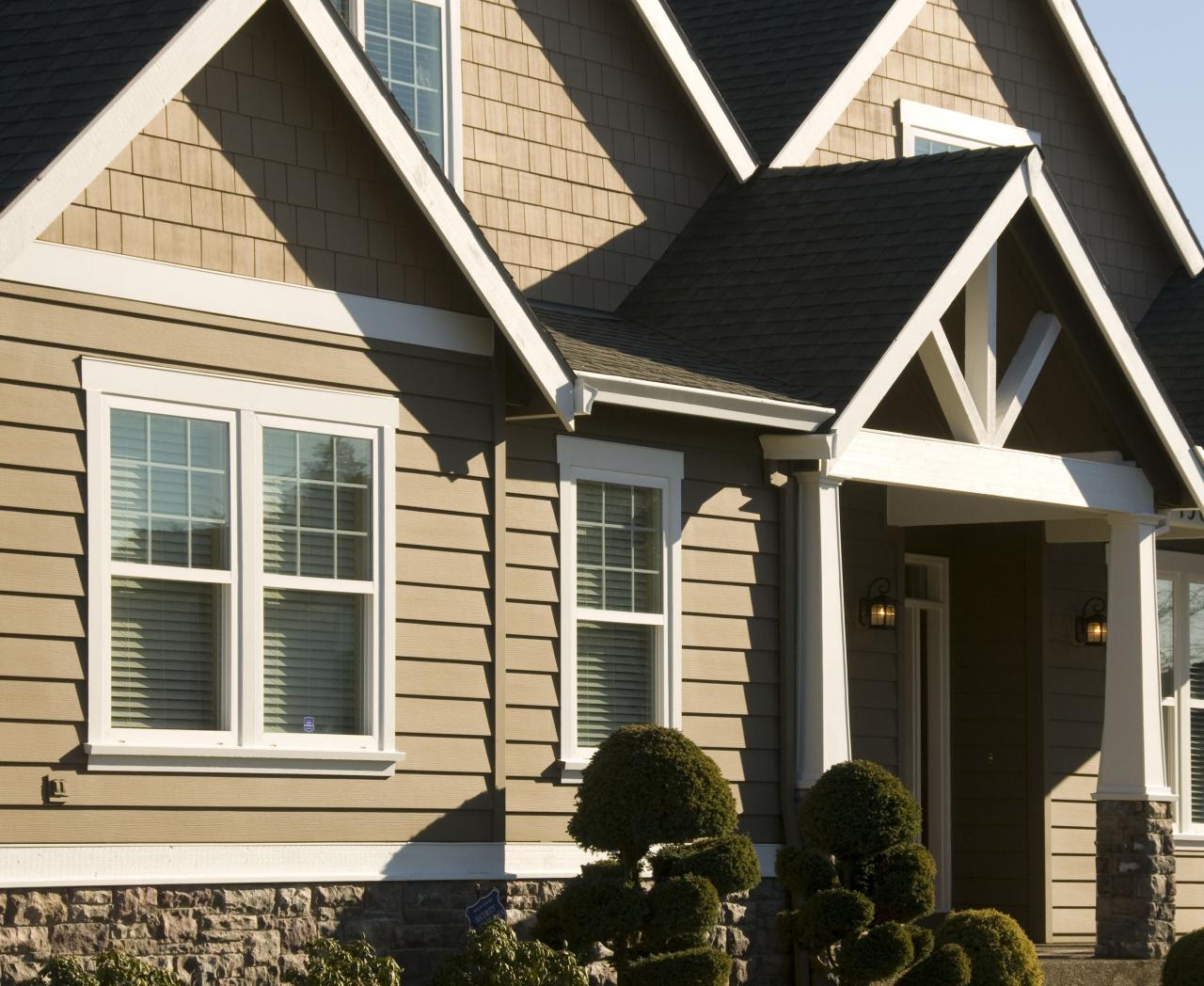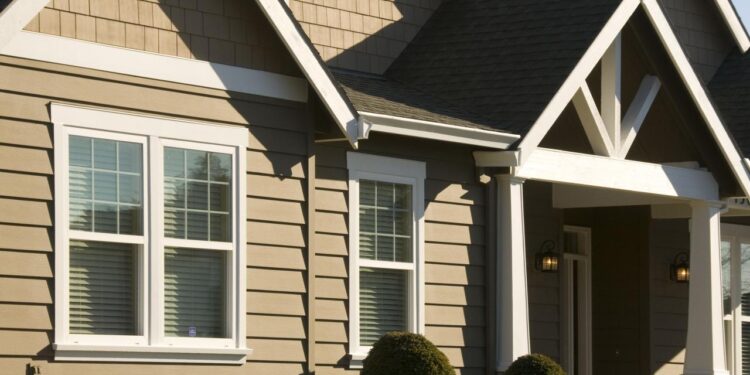Hardie siding houses bring a unique blend of aesthetics and resilience to residential construction projects. In this narrative, we delve into the world of Hardie siding, uncovering its charm and strength that sets it apart in the realm of home exteriors.
From its inception to the array of styles available, this material promises to be a game-changer for homeowners seeking a balance of beauty and durability.
Introduction to Hardie Siding Houses
Hardie siding, also known as James Hardie siding, is a type of fiber cement siding that has become popular in home construction due to its durability, versatility, and aesthetic appeal. It is made from a mixture of cement, sand, and cellulose fibers, making it resistant to fire, rot, and pests.
Benefits of Hardie Siding
- Long-lasting: Hardie siding is known for its longevity, with a lifespan of 30-50 years.
- Low maintenance: Requires minimal upkeep and is easy to clean with just soap and water.
- Weather-resistant: Withstands harsh weather conditions, including high winds, hail, and extreme temperatures.
- Versatile styles: Available in a wide range of styles and textures, including lap siding, shingles, and vertical panels.
Styles and Colors
- HardiePlank: Traditional lap siding that mimics the look of wood.
- HardieShingle: Shingle-style siding for a classic and timeless appearance.
- HardiePanel: Vertical siding panels for a modern and sleek look.
Installation of Hardie Siding
Installing Hardie siding on houses requires a specific process to ensure durability and aesthetic appeal.
Tools and Materials Required
Before starting the installation, gather the following tools and materials:
- Hardie siding planks
- Nails or screws
- Tape measure
- Circular saw
- Hammer or nail gun
- Level
- Utility knife
- Safety goggles and gloves
Comparison with Other Siding Materials
Compared to other siding materials such as vinyl or wood, Hardie siding offers unique advantages:
- Hardie siding is extremely durable and can withstand harsh weather conditions.
- It is resistant to rot, pests, and fire, making it a long-lasting option for homeowners.
- Hardie siding requires minimal maintenance and does not need frequent repainting like wood siding.
- Installation of Hardie siding can be more labor-intensive due to its weight and specific cutting requirements.
- While the initial cost of Hardie siding may be higher than vinyl, its longevity and durability make it a cost-effective choice in the long run.
Maintenance and Care of Hardie Siding
Maintaining Hardie siding is essential to ensure its longevity and preserve the appearance of your home. By following some simple tips and addressing common issues promptly, you can keep your Hardie siding looking great for years to come.
Regular Inspections
Regularly inspect your Hardie siding for any signs of damage, such as cracks, chips, or moisture infiltration. Addressing these issues early can prevent more significant problems down the line.
Cleaning Hardie Siding
- Use a soft brush or cloth to remove dirt and debris from the siding.
- For tougher stains, mix mild soap with water and gently scrub the affected areas.
- Avoid using high-pressure washers, as they can damage the siding.
- Rinse the siding thoroughly with clean water after cleaning.
Preventing Mold and Mildew
- Ensure proper ventilation in areas prone to moisture buildup.
- Trim vegetation near the siding to allow for adequate airflow and sunlight.
- Regularly clean gutters and downspouts to prevent water from seeping behind the siding.
Repairing Damaged Areas
- For small cracks or chips, use a patching compound specifically designed for Hardie siding.
- Replace any severely damaged boards to prevent further deterioration.
- Paint or touch up any areas where the finish has worn off to protect the siding.
Durability and Weather Resistance

When it comes to durability and weather resistance, Hardie siding is known for its exceptional performance in various conditions. Whether facing heavy rain, strong winds, or harsh sunlight, Hardie siding houses stand strong and maintain their integrity over time.
Resistance to Rain, Wind, and Sunlight
Hardie siding is engineered to withstand heavy rain without warping or rotting, providing long-lasting protection for your home. Its advanced composition ensures that it does not absorb moisture, preventing issues like mold or mildew. Additionally, Hardie siding resists damage from strong winds, staying firmly in place even during severe storms.
The UV-resistant finish of Hardie siding also protects against fading and discoloration caused by prolonged exposure to sunlight.
Case Studies of Long-Term Durability
Numerous case studies have demonstrated the long-term durability of Hardie siding houses. For instance, homes with Hardie siding installed decades ago still maintain their original appearance and structural integrity, showcasing the lasting quality of this siding material. These real-life examples serve as proof of Hardie siding's ability to withstand the test of time and various weather conditions.
Closure
As we wrap up our exploration of Hardie siding houses, it's clear that this material offers more than just a facade; it's a testament to quality and endurance. Whether facing harsh weather or simply enhancing curb appeal, Hardie siding proves to be a versatile and reliable choice for any modern home.
FAQ Resource
How long does Hardie siding typically last?
Hardie siding can last up to 50 years with proper maintenance and care.
Can Hardie siding be painted?
Yes, Hardie siding can be painted to change or refresh its color.
Is Hardie siding resistant to pests like termites?
Hardie siding is not susceptible to termite infestations, providing an added layer of protection for homes.
What is the best way to clean Hardie siding?
Regularly washing Hardie siding with a mixture of water and mild soap is the recommended method for cleaning.
Does Hardie siding require special tools for installation?
While specific tools are needed for installation, they are commonly found at hardware stores and rental centers.


